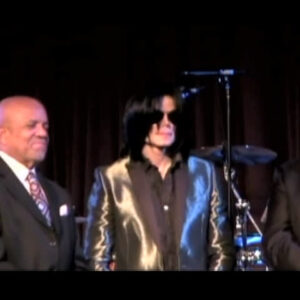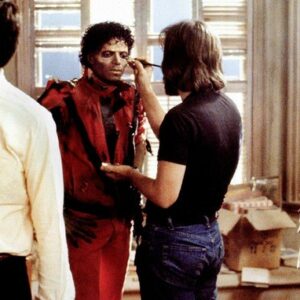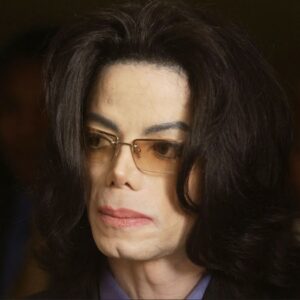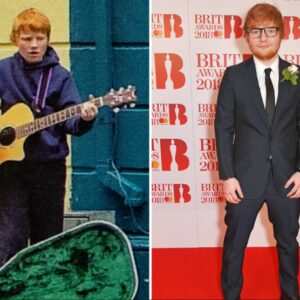In the ever-evolving landscape of pop music, few artists have left as indelible a mark as Pink. Born Alecia Beth Moore, Pink burst onto the scene in the early 2000s with a sound and style that defied conventions. While her raspy voice and genre-blending music won over the charts, it was her unique and rebellious visual aesthetics that set her apart from her contemporaries. As an artist, Pink has always marched to the beat of her own drum, never adhering to the pristine pop princess mold that dominated the early 2000s. Her ability to use her visual identity as a form of artistic expression has not only solidified her as an icon but has also had a profound impact on the broader pop culture landscape, inspiring trends and paving the way for future generations of pop stars.
Pink’s Bold and Rebellious Visual Aesthetics
From the very start of her career, Pink’s visual style challenged what a female pop star could look like. Emerging with an unapologetically punk-inspired aesthetic, Pink made a statement with her brightly colored hair, edgy clothing, and fierce, unrestrained body language. While her contemporaries were glamming up for red carpets in traditional pop star attire—glittering gowns and demure looks—Pink was rocking a more aggressive, street-inspired look that reflected her raw and fearless persona. Her debut album Can’t Take Me Home set the tone, but it was with M!ssundaztood that she fully embraced her rebellious edge.
Pink’s hair became a signature part of her aesthetic. With bold hues of pink, platinum blonde, and even mohawks at various points in her career, her ever-changing hair choices signified her refusal to conform to typical beauty standards. This defiance extended beyond her hair, as her fashion often leaned towards an androgynous, rock-chic look, blending feminine and masculine elements with ease. Leather jackets, baggy pants, and combat boots were staples of her early years, showcasing her punk roots. Over the years, as her music matured, so did her aesthetic—though it never lost its signature edge. Today, Pink’s style is a more refined version of her earlier self, still combining her rocker persona with high-fashion influences, never losing her inherent rebelliousness.
These aesthetic choices have always reflected Pink’s personality—bold, unapologetic, and fiercely independent. Unlike many pop stars who carefully crafted polished, picture-perfect images, Pink embodied a more authentic, raw look. Her visuals stood as a direct challenge to the glossy, hyper-feminine standards often associated with female pop stars, offering a refreshing alternative that resonated with audiences seeking something real. Pink’s image said that it was okay to be different, to be messy, and to reject the superficial in favor of authenticity.
Impact on Pop Culture
Pink’s influence extends beyond just music and has reverberated throughout fashion, beauty, and even societal attitudes. Her bold aesthetic and refusal to conform have made waves in pop culture, inspiring trends and challenging the rigid standards of beauty and femininity that so often govern the industry. Pink became a symbol of female empowerment, showing women that they didn’t have to fit into a box to be successful or beautiful.
In the world of fashion, Pink’s edgy, tomboyish style has made its mark. Her rock-inspired clothing choices paved the way for a shift in the way pop stars—and, by extension, women in general—were dressing. Gone were the ultra-feminine, hyper-sexualized outfits of the early 2000s. In their place, Pink introduced a more androgynous, no-nonsense style that emphasized comfort, strength, and individuality over objectification. This shift was picked up by other artists, most notably Miley Cyrus and Katy Perry, who embraced similar rock-chic looks as they evolved beyond their initial pop star personas.
In beauty, Pink’s signature hair colors sparked a trend of brightly colored hair that has since become a staple of pop culture. From neon pinks to bold purples, these shades have become synonymous with rebellion and individuality, worn proudly by stars and fans alike. What was once considered an edgy, punk-specific look has now infiltrated mainstream fashion and beauty, with brightly colored hair a common sight in music videos, on red carpets, and even in everyday life.
More broadly, Pink’s visual aesthetics resonate with audiences as symbols of authenticity and non-conformity. In a world where so much of celebrity culture is curated, filtered, and manufactured, Pink’s raw, unpolished visuals have served as a breath of fresh air. Her authenticity connects deeply with fans, particularly those who have felt excluded or marginalized by traditional beauty standards. Pink’s visuals offer a sense of inclusivity, telling her fans that it’s okay to be different, it’s okay to not fit the mold, and it’s okay to challenge societal norms.
Influence on Other Artists
Pink’s unique aesthetic has undoubtedly influenced a generation of artists who followed in her footsteps. While she may not always receive direct credit for her role in shaping pop culture, her influence is undeniable. The rebellious, non-conformist attitude she has displayed throughout her career has inspired countless other artists to embrace their individuality and use their visual identities as a form of self-expression.
Miley Cyrus, for instance, has frequently cited Pink as a major influence on her own aesthetic evolution. Much like Pink, Miley moved from a more traditionally feminine pop star image to one that was edgier and more rebellious. Her infamous 2013 Bangerz era, complete with platinum blonde hair, tongue-out antics, and risqué fashion choices, owed much to Pink’s earlier punk rock aesthetic. Similarly, Katy Perry’s vibrant, candy-colored visuals during her Teenage Dream era incorporated elements of Pink’s brightly colored, attention-grabbing style.
Beyond individual artists, Pink’s influence can be seen in the broader music industry’s embrace of artists who defy conventions. In a time when image is often seen as just as important as music, Pink’s trailblazing use of her visual identity to challenge gender norms and societal expectations has opened the door for artists to use their image to make bold statements. Artists like Lady Gaga, Billie Eilish, and Halsey have all, in different ways, followed the precedent set by Pink by using their aesthetics to push the boundaries of gender, identity, and self-expression.
Pink’s visual aesthetics have also played a crucial role in the ongoing conversation about gender and identity in the music industry. As more artists use their image to make statements about personal freedom and empowerment, Pink’s early rejection of stereotypical femininity continues to serve as a blueprint. By refusing to be boxed into a specific category, Pink has shown that an artist’s image can be as fluid and multifaceted as their music, encouraging others to do the same.
Conclusion
Pink’s visual aesthetic has been a crucial part of her identity as an artist, shaping not only her own career but the broader pop culture landscape. Her bold, rebellious look has inspired a generation of artists to embrace their individuality and reject the rigid standards of beauty and behavior often imposed on female pop stars. In a world where image is often curated and controlled, Pink’s authenticity stands out, offering a powerful reminder of the importance of staying true to oneself.
Her influence can be seen in the music, fashion, and beauty industries, as well as in the shifting attitudes toward gender and identity in popular culture. From her signature hair colors to her androgynous clothing choices, Pink’s visuals have left a lasting imprint on pop culture, inspiring fans and artists alike to embrace their uniqueness. As Pink continues to evolve as an artist, her visual identity remains as strong and impactful as ever, cementing her legacy as a true pop culture icon.





